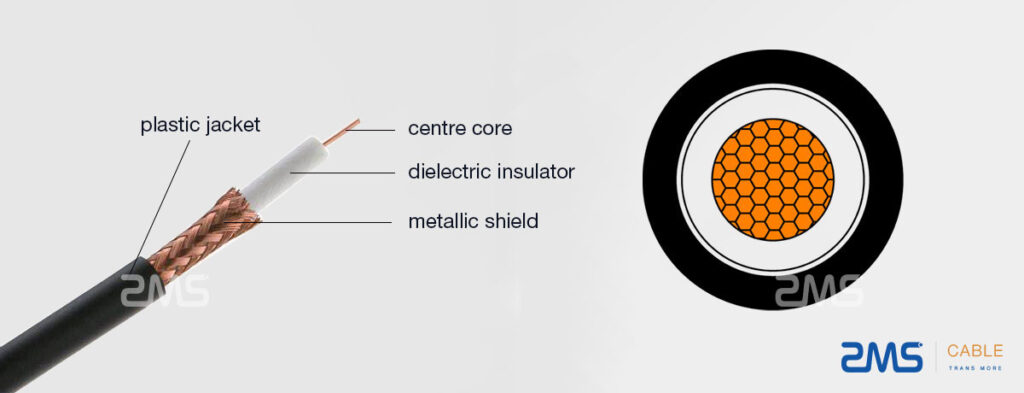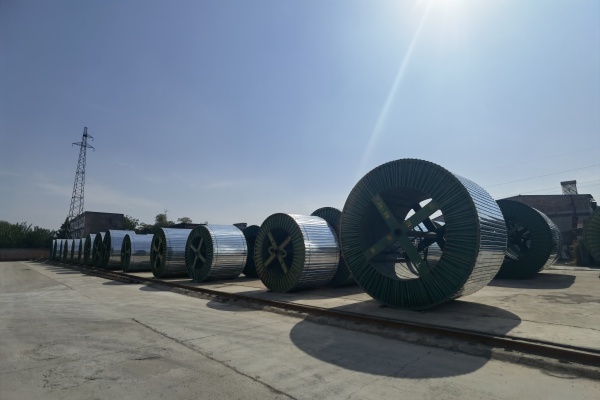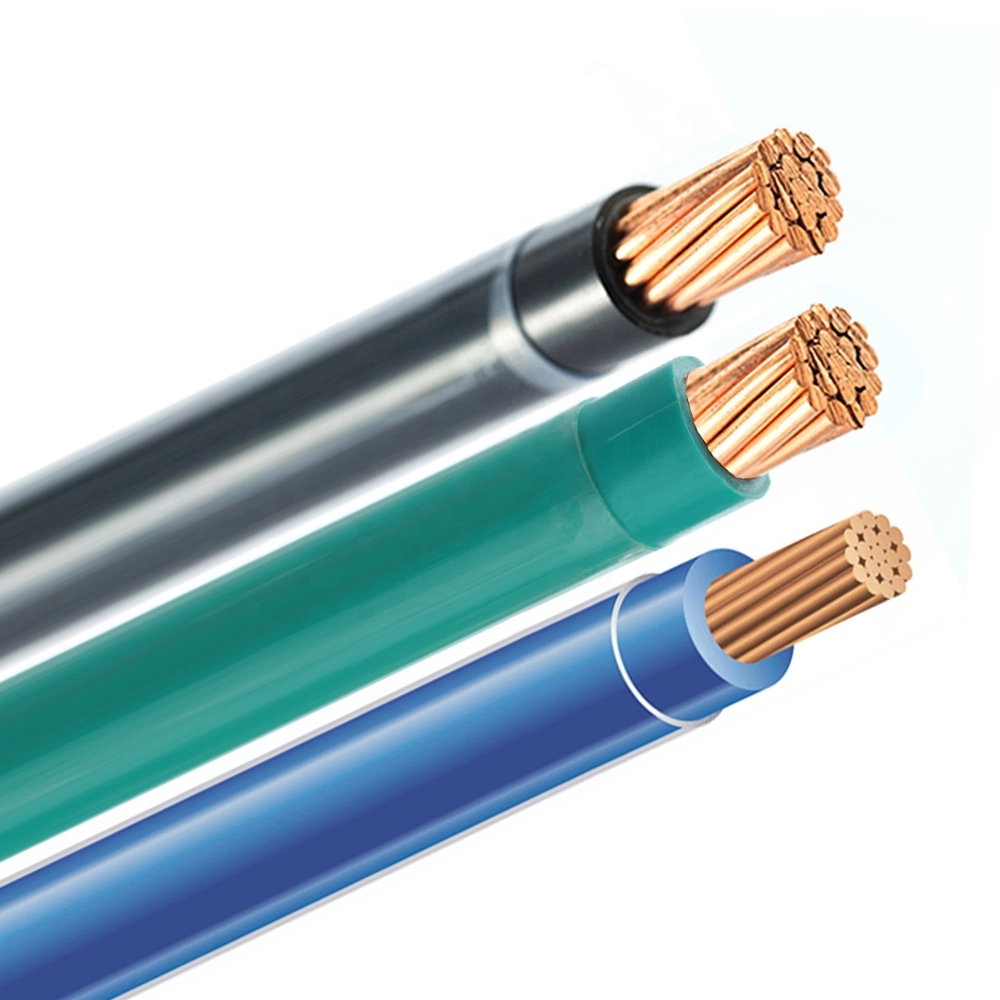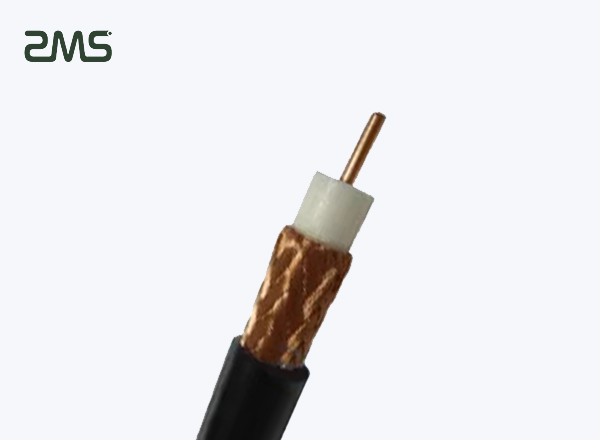Coaxial cables are at the heart of many data transmission technologies used today in various sectors such as telecommunications, the dissemination, security and many others. Although their use has been well established for several decades, These cables continue to play a crucial role in modern infrastructure. In this article, We are going to explore in depth what a coaxial cable is, its different types, ses applications, as well as the advantages and disadvantages it presents in relation to other types of wiring. We will also approach ZMS Cable products and the way they stand out on the market.

What is a coaxial cable ?
Coaxial cable is a type of electric cable widely used for the transmission of signals, mainly in cable television systems, IT networks, and high -frequency data transmission applications. Its unique design distinguishes it from other types of wiring by its multilayer structure and its characteristics of protection against electromagnetic interference.
Structure of a coaxial cable
A coaxial cable is made up of several layers which ensure both signal protection and the integrity of the transmitted data :
The central driver : This is the core of the cable, generally copper or aluminum, signal. It is very conductive and makes it possible to transmit electrical energy with a low loss.
The insulation : Surrounding the driver, this plastic or foam layer isolates the signal from the rest of the cable. It also avoids short circuits.
Shielding : This layer, often composed of braided metal, is essential to protect the signal from external electromagnetic interference.
The exterior sheath : Plastic (often in PVC), It protects the cable against mechanical damage and external environmental conditions (humidity, heat, etc.).
Materials used
The materials chosen for each layer of a coaxial cable are crucial to guarantee the quality of transmission and durability of the cable. Copper is generally used for the central driver, while the shielding can be made up of copper, aluminum or any other driver's metal. The insulation and the outdoor sheath are often made of plastic or rubber for their resistance and flexibility.
Basic operation
The coaxial cable allows the transmission of electrical signals in the form of electromagnetic waves. Thanks to its shielding, It prevents external interference, which ensures that signals remain intact when they go through significant distances.

Coaxial cable types
There are several types of coaxial cables, each with specifications adapted to specific applications. Here are the most common :
Low loss coaxial cable
This type of cable is used for long distances transmissions. It has low resistance and very low signal loss, which helps maintain the quality of the signal over extensive distances. It is commonly used in telecommunications networks or cable television infrastructure.
High frequency coaxial cable
These cables are designed for the transmission of high frequency signals. They are often used in broadcasting equipment, high -speed data networks, as well as in applications requiring ultra-precise signal performance, such as satellite transmission systems.
Armored coaxial cable
The armored coaxial cables have reinforced shielding which protects even better against electromagnetic interference. This type of cable is essential in electrically noisy environments, like factories or industrial environments, where strong signals can alter the quality of the transmission.
Other types of coaxial cables
RG-6 and RG-59 cables are the types of coaxial cables The most used in cable television systems. RG-6, For example, is a low loss cable that offers higher performance for HD transmissions and high frequency signals. RG-59, as for him, is more commonly used for low -frequency installations and domestic applications.

Coaxial cable applications
Coaxial cables have a wide range of applications in different sectors, from security to security, through audio and video.
Telecommunications
Coaxial cables are widely used in cable television networks, broadband Internet and communication infrastructure. They allow the transmission of video signals, audio and internet reliably and quickly. Coaxial cables with low loss and high frequency are used in these networks to ensure transmission without interruption.
Surveillance systems (CCTV)
In surveillance systems, Coaxial cables are used to transmit real -time videos between cameras and digital video recorders (DVR). Their ability to transmit high definition video signals (HD) with low signal loss is a major asset for safety.
Computer networks
Although modern ethernet networks mainly use twisted pairs cables, Coaxial cables have been widely used in the old local network infrastructure (LAN). They are sometimes still used in installations requiring a high -capacity of bandwidth connection.
Radiofrequency and radio systems
Coaxial cables are also used in television and radio stations to transport radio frequency signals. Broadcasting applications require clear and reliable transmission of signals, What the coaxial cables offer perfectly.
Audio and video systems
In the audio and video industry, Coaxial cables are used to connect equipment such as televisions, DVD readers, and other audio-video devices. Their ability to transmit audio and video signals with exceptional quality makes it a popular choice for high quality domestic installations.

The advantages of coaxial cables
Coaxial cables have several advantages that still make them popular in many modern applications.
Excellent signal quality
One of the greatest advantages of coaxial cables is their ability to transmit high quality signals over long distances without significant degradation. Shielding protects against electromagnetic interference, thus ensuring a stable and clear transmission.
High transmission capacity
Coaxial cables are able to transport large amounts of high frequency data. This makes them particularly suitable for applications that require a large bandwidth, like cable television or broadband Internet.
Robustness and sustainability
Coaxial cables are generally more robust than other types of cables. Thanks to their armored design and their resistant exterior sheath, They are able to support difficult environmental conditions, like humidity, heat and physical impacts.
Ease of installation
Coaxial cables are relatively easy to install compared to other types of wiring. Their flexibility and resistance to interference make it a popular option for a variety of applications.
Economy and efficiency
The cost of coaxial cables is lower than that Optical fiber cables while providing a largely sufficient transmission performance for many applications. They are therefore particularly advantageous for large -scale installations where the budget is a key factor.
The drawbacks of coaxial cables
Despite their many advantages, Coaxial cables have certain drawbacks which must be taken into account when using.
Bandling of bandwidth
Coaxial cables cannot transport as much data as fiber optic cables. For applications that require an extremely high bandwidth, like the transfer of massive data, fiber optic cables can be preferable.
Rigidity
Although coaxial cables are relatively flexible, They are often more rigid than other types of cables, which can make their installation more complex in confined spaces.
Long -distance signal loss
Although coaxial cables are effective on short distances, their performance decreases over very long distances without signal amplifier. This can be a problem for installations where important wiring lengths are necessary.

Comparison of coaxial cables with other types of cables
Coaxial cables vs optical fiber cables
Optical fiber cables have a much higher bandwidth capacity than coaxial cables and are generally more suitable for installations requiring very fast data transmissions. However, Coaxial cables are often more profitable and easier to install, which makes it a more practical option for many applications.
Coaxial cables VS Copper cables with twisted pairs
Twisted pairs cables (UTP) are often used in computer networks and telecommunications. However, Coaxial cables have the advantage of better protection against electromagnetic interference, which makes them more suitable for certain applications, like cable television.
Coaxial cables vs HDMI cables
HDMI cables are designed specifically for the transmission of high -definition audio and video signals. Although they are similar to coaxial cables in certain applications, HDMI cables offer better performance for the transmission of digital audio and video signals over relatively short distances.

How to choose a coaxial cable ?
The choice of the right coaxial cable depends on several factors :
Signal needs : Choose a low -loss coaxial cable for long -distance transmissions or high -speed cable for high -speed applications.
Standards and certifications : Check that the cable meets industrial standards (Like RG6 or RG11).
Interference : If you are in an environment where electromagnetic interference is frequent, Opt for an armored cable.
ZMS cable and coaxial cables
ZMS Cable offers a range of high quality coaxial cables, Suitable for various applications. That you need coaxial cables for telecom networks, security systems, or audio-video installations, ZMS offers reliable products, durable and adapted to your specific needs.
Trends and innovations in coaxial cables
Coaxial cables continue to evolve, with improvements in terms of transmission capacity, Reduction of signal losses, and adaptation to new technologies such as the Internet of Things (IoT) and 5G.
Conclusion
Coaxial cables, Despite the advent of more recent technologies such as optical fiber, remain essential components in many infrastructure. Their ability to transmit high quality signals, their robustness and ease of installation make it a solution of choice for various applications. By choosing ZMS Cable, You opt for first choice coaxial cables, Designed to meet the most strict performance and reliability requirements.
Contact us today for more information on our coaxial products and find out how ZMS Cable can meet your wiring needs for your major projects.

